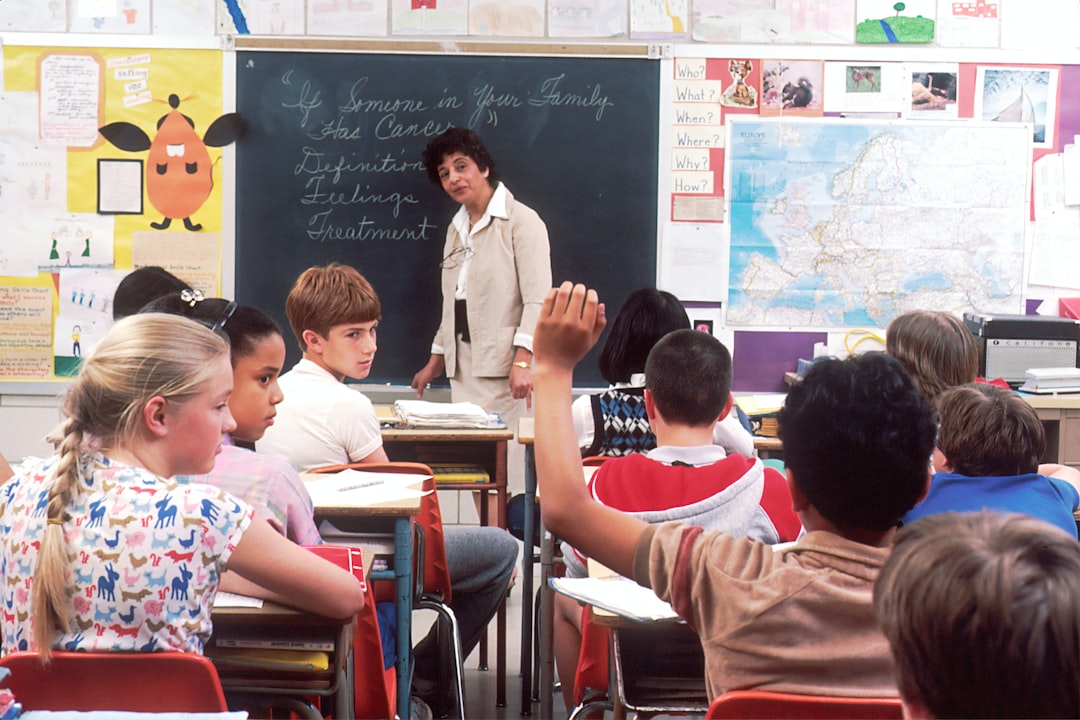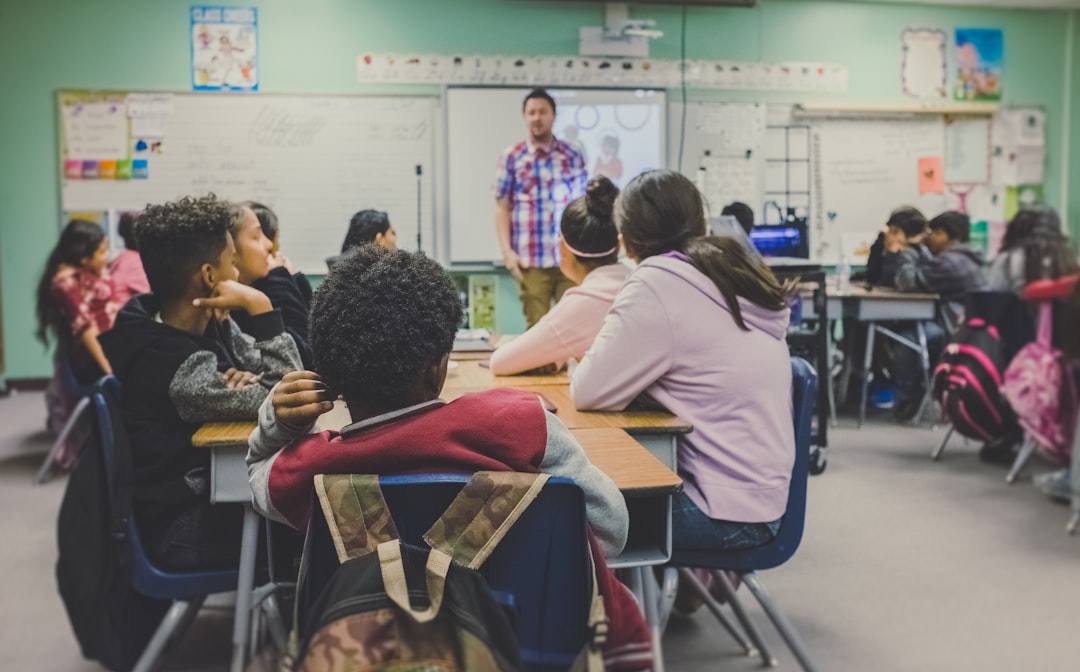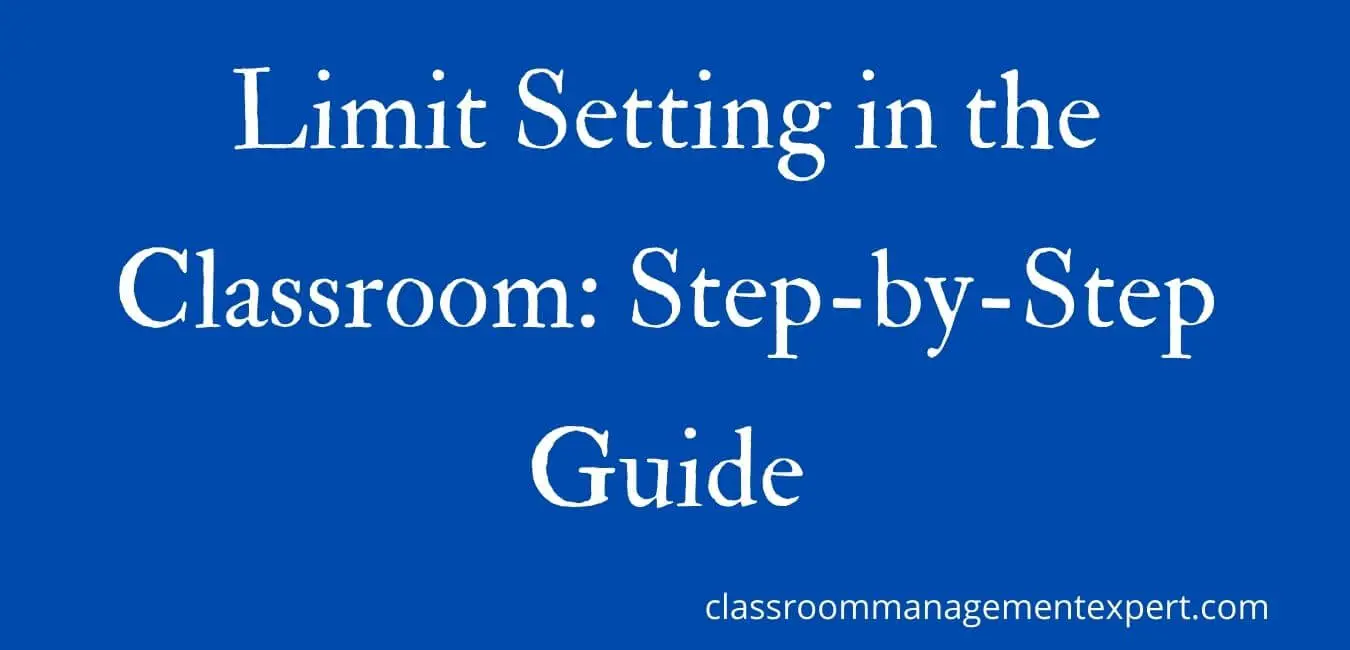Rules define limits but do not establish limits. This is where limit setting comes in. Through limit setting, teachers systematically teach their students that they mean business by setting clear and enforceable rules.
This helps to create a safe and disciplined learning environment for all students.
In this article, I will discuss and provide steps on how to implement effective limit setting in your classroom. Be sure to follow me through to the end!
What is Limit Setting in the Classroom?
Limit setting is rule enforcement. It is consistently disallowing infractions of the basic classroom rules, but Jones (2007) asserts that limit setting is done with the body, not the mouth. This means that the use of physical gestures and facial expressions, as well as the tone of voice, are all used in order to convey the seriousness of the situation.
Limit setting is about creating a safe and orderly environment for all students. When done correctly, it will help to establish clear expectations, which in turn will foster responsible and accountable behavior from students.
In limit setting, the teacher is assertive but never aggressive, because the object of limit setting is to calm the students and to get them back on task.
Step-by-step Procedures to Implement Limit Setting in Your Classroom
The following are the steps you can take to set effective limits in your classroom:
Step 1: Eyes in the Back of Your Head
One of the most important aspects of maintaining a positive, effective learning environment in your classroom is limit setting.

Limit setting means establishing and enforcing rules and limits on student behavior. This can be a difficult task, but it is essential for creating an orderly and productive classroom.
One key to successful limit setting is having withitness, or being aware of everything that is going on in the classroom at all times.
Withitness allows you to see when students are breaking the rules and take appropriate action quickly and effectively. It also helps you to monitor student progress and ensure that all students are following the rules.
There are many benefits to having withitness in your classroom. First, it helps keep students safe by ensuring that they are not engaging in dangerous or disruptive behavior.
Withitness also promotes positive student behavior by providing clear expectations and consequences for rule violations.
Step 2: Terminate Instruction
In any classroom setting, it is important to set limits and stick to them. However, when students are being disruptive, it can be difficult to do this effectively. In these cases, it may be necessary to terminate instruction until the students are able to behave.
There are a few reasons why terminating instruction is often the best way to ensure limit setting in your classroom.
First, by removing all attention from the disruptive students, you can quickly regain control of the class.
Second, this sends a clear message that disruptions will not be tolerated. Finally, it gives you time to come up with a plan for how to address the behavior issue.
Of course, terminating instruction is not always easy or desirable. It can be stressful for teachers and students alike, and it can disrupt learning goals.

Step 3: Turn, Look, and Say the Student’s Name
As a teacher, establishing and enforcing limits in the classroom is essential. Children need to know what is expected of them and what will happen if they cross those boundaries.
One way to ensure limit setting in your classroom is to use the “Turn, Look, and Say the Student’s Name” strategy.
When a student is behaving inappropriately or not following directions, you first turn your body towards them and make eye contact. Next, say their name in a firm tone. Finally, look them in the eye and maintain unwavering eye contact until they respond or the behavior stops.
This strategy can be especially helpful when there is more than one child misbehaving at once. It lets each child know that you are paying attention to them and that their behavior is unacceptable.
Most importantly, it sends a clear message that you mean business and are not going to tolerate any misbehavior.
Step 4: Walk to the Edge of the Student’s Desk
It’s a scenario that happens in classrooms all over the country: A student is not following directions and continues to disrupt the class. In order to ensure that limits are set and followed in your classroom, you may need to walk to the desk of the student who is not following directions.
There are a few reasons why walking to the desk is an important step in limit setting. First, it shows that you are serious about enforcing the rules.
When you are close to the student, it also makes it more difficult for them to continue their disruptive behavior.
Finally, walking to the desk helps establish a clear boundary between students who are following directions and those who are not.
If you find yourself in a situation where a student is not following directions, it’s important to move toward them at a deliberate pace until you are touching the edge of their desk.
Step 5: Prompt
It is important for a teacher to set limits in the classroom. This ensures that students stay on task, learn what is expected of them, and feel safe and secure in their environment.
One way to set limits is to give prompts to your students. Prompts tell the student what they should do next and help keep them on track.
There are many reasons why it is important for a teacher to give prompts to their students. First, prompts ensure that limit setting in the classroom is effective. If a student knows what is expected of them, they are more likely to stay on task.
Second, prompts help create a sense of order and structure in the classroom. This can be especially helpful for students who may be struggling with organization or who need some guidance in terms of what they should be doing next.
Finally, prompts can help prevent negative behaviors from occurring.
Step 6: Palms
When it comes to limit-setting in the classroom, some teachers may feel hesitant to use physical contact.
However, if a student does not comply during Step 5 of the limit-setting process, leaning slowly across the desk and placing both palms flat on the far side of the desk on either side of the student can ensure that the limit is set.
While doing that, you should maintain unwavering eye contact until the student replies. Remember to thank the student if he/she complies.
There are several reasons why putting your palms on the desk of the student while remaining eyeball to eyeball can be an effective way to enforce limits in your classroom.
First, it shows that you are serious and that you mean business. Second, it sends a clear message to the student that he or she needs to comply with your request. Finally, it can help prevent further escalation and potentially dangerous situations.
If you find yourself in a situation where a student is not complying with your limits, remember that placing your palms on the desk can be an effective way to enforce them.
Step 7: Camping Out in Front
If the student has been talking back during the encounter in the previous steps, you should continue with Step 6, and you should “camp out” until the student complies.
Backtalk in the classroom can be a frustrating and challenging experience for educators. One common method of dealing with backtalk is to limit-setting in the classroom.
This means that you should give a prompt to the student, wait until the student complies, and then move on to the next activity. There are several reasons why this approach is beneficial.
First, it allows you to avoid further conflict with the student and maintain a calm demeanor. Second, it models appropriate behavior for other students in the class.
Finally, it provides an opportunity for the student to reflect on their actions and apologize if necessary.
Step 8: Camping Out from Behind
If backtalk involves more than one student during your encounter with them, camping out in the back may be more effective. You should use the wide walkways and move around the desks to stand directly between the students.
Leaning on the table of the first student, as described in Step 5, blocks the view of the second student. The teacher should totally ignore the second student and establish eye contact with the first student.
Then you should wait until the first student is back on target. Only when the first student is working is it time to focus on the second student.
The Limitations of Limit Setting in the Classroom
The following are some limitations of limit setting in the classroom:
1. If you cannot be calm and show anger and frustration, the effectiveness of limit setting is weakened.
Limiting behavior in the classroom is important for creating a safe and effective learning environment. If you cannot maintain a calm demeanor, the effectiveness of your limit setting will be weakened.
Children can often sense when adults are feeling frustrated or angry, and this can lead to problems in the learning process. For effective limit setting to work, it is important for you to remain calm and focused.
If you remain calm, your students will perceive that you are in control and they should listen to what you have to say. This will help keep them focused on their work and discourage any disruptive behavior.
2. If you have a poor relationship with the students, they may not return to work as a challenge to the teacher’s authority.
When it comes to setting limits in the classroom, it is important for teachers to have a strong relationship with their students. If the students perceive that you will not enforce boundaries when they return to work, then it will be difficult for those limits to be effective.
This can be a challenge for limit setting, as it is important for students to know that there are boundaries in the classroom and that they need to respect them.
If you have a poor relationship with your students, it is important to work on repairing that relationship so that you can effectively set limits in the classroom.
3. Wrong Movements
If you move away from students too quickly during limit setting, they may start to believe that pseudo compliance is enough to get them out of your space. This can lead to a general disregard for limits, as students may think that you won’t enforce them if they don’t follow your rules.
It’s especially important to move slowly and deliberately when setting limits in the classroom; moving too quickly or suddenly can cause students to lose respect for you. Check out why your movement is important in managing student behavior.
4. Maintaining too much distance from students
If you are trapped behind a desk or teacher’s center, your ability to move quickly to a student will be reduced. This can help the students know they have time to get back on the task before the teacher can reach them. In this instance, limit setting will be ineffective.
5. Boring or too long lesson
If the lesson is boring, or the students have been sitting for a long time, an interruption from a limit-setting episode may not be rewarding. Students may then encourage each other to break away from the lesson to keep things interesting.
6. Lack of withitness of teachers
If you are not aware of what is happening in your classroom, students will be more likely to engage in inappropriate behavior. This will lead to increased problems because students will know that they can get away with anything. Check out our article on how to improve your withitness in the classroom.
7. Whole class disruption
If the entire class is off-task, standing by one desk will not help solve the situation. So, you need to work effectively to help the entire class be engaged. This suggests that you put in place strategies to help students engage with their work.
8. Implementing limit setting at the wrong time
If a student is agitated or physically aggressive, it may be best to avoid getting close to them. Moving into their space may be viewed as a threat, and could result in violence. Thus, at that point, it will not be effective to implement limit setting.
Conclusion
In conclusion, limit setting is an important tool that teachers can use in the classroom to help students stay on task and be productive. It can also help to create a more positive and structured learning environment. Teachers should experiment with different limit-setting strategies to find what works best for their students. Lastly, it is important to keep in mind that limit setting should not be used as a punishment, but rather as a way to help students stay on track and achieve their goals.



















